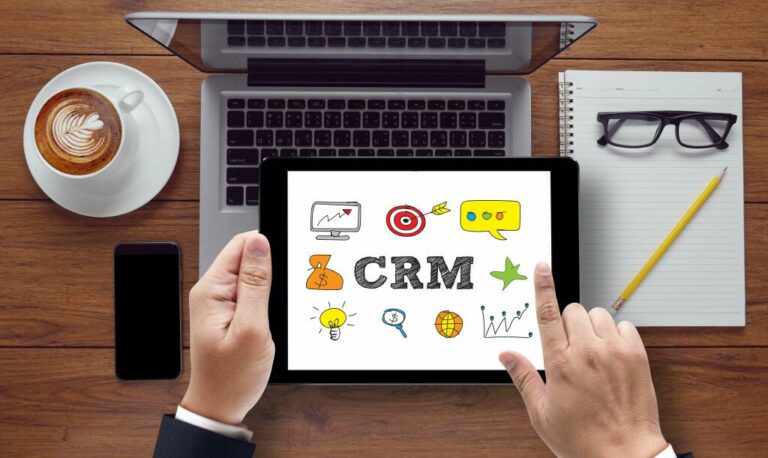Содержание
However, the harmony is precarious, and if disagreements re-emerge the team can slide back into storming. The relationships and interdependencies formed during storming and norming pay off in the performing stage. By now, team members have honed their conflict-resolution abilities and spend less time focused on interpersonal dynamics and more on team effectiveness. This is where surges in creative problem-solving and idea generation occur. The lines between individual performance and team success blur as the team works to deliver results.
- Only by discussing and working on those things together can you move forward and progress to the next stage of team development.
- Stagnation is always worse than conflict — instead of maintaining a facade of politeness, it’s crucial that you identify your problems, analyze them, AND talk about them.
- You don’t have to gain superpowers from a serum or create one of the most iconic brands of your generation to be a great leader.
- Having a way to identify and understand causes for change in the team’s behaviour can help the team to maximize its process and productivity.
- The idea is to keep the team pumped up by imagining where they are headed and what it will feel like to look back on even more success.
The first 4 stages of group development are also known as the “Forming-Storming-Norming-Performing Model” — they were established by Bruce W. Tuckman, an American Psychological Researcher, in 1965. In order to not get bottlenecked in the storming stage, members have to work together and play to each other’s strengths to overcome obstacles and stay on pace. Also, take the time to address and overcome conflicts early on so they don’t stay an issue throughout the other phases. Jira IntegrationTurn action items generated in Fellow into Jira issues so their completion status stays in sync between both tools.
(Although, it does make the stages easier to remember.) Each is aptly named and plays a vital part in building a high-functioning team. Keep in mind that no one person needs to be responsible for the team. Project management duties can be shared, with different members taking responsibilities for each stage of the project.
Group members are on high alert, each wanting to put their best foot forward while, at the same time, sizing up each other’s strengths and weaknesses. Team members start to resolve their differences, appreciate colleagues’ strengths, and respect the leader’s authority. Behaviour from the storming and norming phases can overlap for some time when new tasks come up. If your team has reached this stage, you’re on a clear path to success. You have a mature, well-organized group now fully-focused on reaching the project goals established in the Forming stage.
Stage #3
Get in touch in the comments section below and share your experiences with the community. Reflecting on how perspectives and working practices have changed and been positively affected by individual and group effort can reveal great learning points for the future. Though this activity can be used as a debriefing exercise at the end of a project, it can also be effective at surfacing the positive outcomes of initiatives like moving a team from Norming to Performing.

The position of this unofficial leader may also be occupied by the strongest authority figure in the team. They are also overly positive about the project, because it’s new, and new is always exciting. Tuckman only added the fifth and final stage in 1977, together with Mary Ann C. Jensen who had previously reviewed his original paper. The Performing Stage — mainly characterized by overall synergy. PodcastSupermanagers is for managers, like you, who want to be extraordinary at the fine craft of management. Agenda TemplatesKeep all of your meetings running smoothly with these pre-built meeting agenda templates.
Storming
While it’s important to accept that remaining exclusively in the Performing stage – particularly for long-serving teams – is unrealistic, it’s also worth remembering that this is the ideal state. As such, it’s vital you document learning points and strategies that have worked for you and your team while Performing so you can apply them again in the future. An activity to support a group to get to know each other through a set of questions that they create themselves. The activity gets participants moving around and meeting each other one-on-one. It’s useful in the early stages of team development and/or for groups to reconnect with each other after a period of time apart. While most teams progress through the stages of the Tuckman model of team development in a linear fashion, it is not inevitable.

But no matter what the reason teams are formed, they go through four stages, according to a 1965 research paper by Bruce Tuckman of the Naval Medical Research Institute at Bethesda. Even the most successful groups, committees, and project teams disband sooner or later. Their breakup is called adjournment, which requires dissolving intense social relations and returning to perfnanent assignments. Leadership is shared, and members are willing to adapt to the needs of the group.
SolutionsMeeting agenda softwareCollaborate on meeting agendas, assign action items, and ask for meeting feedback. Objectives Stay on top of your team’s goals by clearly recording, defining, and tracking the progress of your OKRs in Fellow’s Objectives tool. There are other advantages to tracking your time with an app though. When you know how long a process takes, you can identify areas that could be made more efficient.
As momentum builds and each team member leans in to the team’s goals, productivity—both personal and collective—begins to increase. This may be the perfect time to evaluate team functions to increase productivity even more. The forming stage of team development is punctuated by excitement and anticipation.
Set A Clear Purpose And Mission And Revisit It Throughout The Process
You may feel like you can skip the first or the last, but each stage has a purpose. Each of these five stages clearly represents a step that teams go through, from start to finish, to work on a project as they complete all of the necessary steps and tasks for it to be a success. Team development will have your team be as successful and as high performing as possible. Learn how these 5 stages will create a high-functioning unit. The first stage of team development is forming, which is a lot like orientation day at college or a new job.

According to Tuckman, raising awareness about the different stages and why things are happening in certain ways could positively influence the team’s process and productivity. Unity is upon everyone and a consensus develops around who the leaders are, what everyone’s role is, and what comes next. There’s also a sense of bonding between the team and is more familiar with each other’s personalities and sense of humor. There should also be a sense of comfort in the norming stage when giving constructive feedback or asking for help as you work through various tasks.
Disbanding a team can create some apprehension, and not all team members handle this well. The termination of the team is a regressive movement from giving up control to the team to giving up inclusion in the team. This last stage focuses on wrapping up activities rather than on task performance. Norming is the third stage of the team development process. This is where groups begin to settle into a working pattern, appreciate one another’s strengths and become more effective as a team. All teams are made up of individuals with varying skill sets, perspectives, and needs.
Try breaking large goals down into smaller, more manageable tasks. Then, work with the team to redefine roles and help them flex or develop their task-related, group-management, and conflict-management skills. Most high-performing teams go through five stages of team development. https://globalcloudteam.com/ Teams assembled for specific project or for a finite length of time go through a fifth stage, called adjourning , when the team breaks up. A planned conclusion usually includes recognition for participation and achievement and an opportunity for members to say personal goodbyes.
When conflicts are resolved, it can improve existing processes and bond members together. When members disagree about something, listen to each side. If everyone in your group thinks and acts the same, then why do you have a group?
In the norming stage, consensus develops around who the leader or leaders are, and individual member’s roles. Interpersonal differences begin to be resolved, and a sense of cohesion and unity emerges. Team performance increases during this stage as members learn to cooperate and begin to focus on team goals.
Team norms set a standard for behavior, attitude, and performance that all team members are expected to follow. Norms are effective because team members want to support the team and preserve relationships in the team, and when norms are violated, there is peer pressure or sanctions to enforce compliance. In the performing stage, consensus and cooperation have been well-established and the team is mature, organized, and well-functioning.
What Are The 5 Stages Of Team Development?
Participants experience the practice of more compassion and the benefits it engenders. Disagreements and differences of opinion will always happen when passionate and talented people get together – the key is to not get bogged down and find productive ways to navigate those differences. Forming is the first stage of team development and is where a team first comes together, gets to know one another, and becomes oriented with the goals and purpose of the team.
Track the time you spend on individual tasks, to build daily and weekly reports of the time you spend on the project. You can then further analyze your reports to see how much time you need to finish individual project tasks and whether there is room for improvement in that time. Instead, they adopt an open exchange of ideas and opinions and learn about what it’s really like to work together. This can lead to conflict, disputes, and competition, depending on how their expectations, workflows, ideas, and opinions differ.
It can also help you predict how much additional time your group might need to complete the current project. Encouraging your team to share their ideas and opinions is the key to finding the “big ideas”. Business owners, managers, and entrepreneurs are often viewed as team leaders. Groups are so in-sync during the performing stage that it seems to happen naturally.

There is a clear and stable structure, and members are committed to the team’s mission. Problems and conflicts still emerge, but they are dealt with constructively. The team is focused on problem solving and meeting team goals. Next up is the performing stage, which tends to be where there is the most cohesive work environment, people are happy and excited, and team performance is at an all-time high. There’s a clear and stable structure in place throughout the group and everyone is fully committed to achieving the goals put in place.
What Is Team Development?
Canva is a free drag-and-drop platform that team members can use to create virtual future-vision boards. Have everyone change their online avatar to a picture of their pet for the day. For people who don’t have pets, encourage them to take a picture of something else in their home they are fond of. You might lose a little productivity on pet-picture day, but you’ll more than make up for it in newfound rapport among team members.
Key Actions To Support Adjourning
As groups work together, conflicts in thinking, approach, or working practices can and will arise. At the end of the exercise, all the questions go up on a whiteboard to encourage further conversation throughout the day. By encouraging the group to take ownership of this part of the team development process, you can meaningfully impact the Forming stage.
A large part of moving from Norming to Performing is empowering the members of your team to do work that excites and engages them individually as well as a group. Even when a team is performing at a high standard, there are often opportunities for individual action and proactivity that can help stages of group formation maintain growth and keep everyone in a group happy. Remember that a group is strengthened as its individual members do more of what matters to them and are engaged in creating the change they want to see. This is a structured process designed for teams to explore the way they work together.
Tuckman’s Stages Of Team Development
The point is to get your freelance creatives and full-time team members engaged with each other. Set up a video call and encourage all ideas—including off-the-wall ideas. During the norming stage, you really want to give the team a wide berth as the members find their way to the performing stage.
